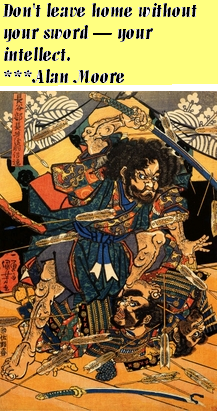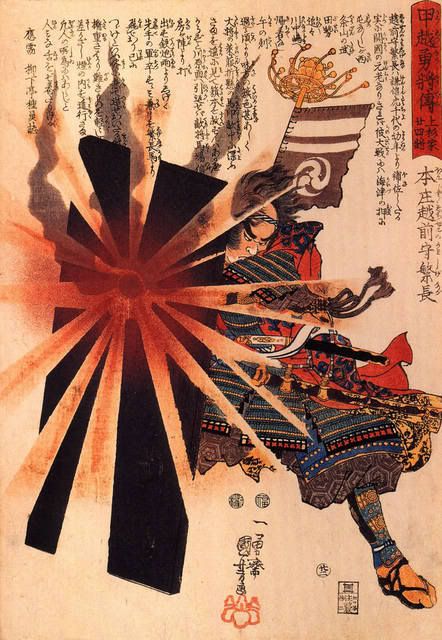musha-e: "Warrior prints." as defined at http://www.osakaprints.com/content/information/glossary.htm
Musha-e: "Originally, paintings of historically important warriors; also includes warrior prints." as defined at http://ana.lcs.mit.edu/~jnc//prints/glossary.html
From Wikipedia:
"Kuniyoshi was an excellent teacher and had numerous pupils who continued his branch of the Utagawa school. Among the most notable were Yoshitoshi, Yoshitora, Yoshiiku, Yoshikazu, and Yoshifuji. Typically his students began an apprenticeship in which they worked primarily on musha-e in a style similar to that of their master. As they became established as independent artists, many went on to develop highly innovative styles of their own. His most important student was Yoshitoshi, who is now regarded as the "last master" of the Japanese woodblock print."
From http://www.kuniyoshiproject.com/Main%20-%20Characters.htm and http://www.kuniyoshiproject.com/Main%20-%20Warrior%20triptychs.htm
Kuniyoshi portrayed nearly 1,000 different characters in his warrior and historical prints.
Kuniyoshi produced more than 370 warrior triptychs and diptychs between 1818 and his death in 1861. This number does not include his many depictions of actors in historically based kabuki plays. ...the individual panels are each about 14 by 10 inches (36 by 25 centimeters), a size known as ôban.
Some musha-e prints:
"Hasebe Nobutsura during the taira attack on the takakura palace, Kyoto"
(click painting to purchase t-shirts with this quote)
"Kagesue, Takatsuna and Shigetada crossing the Uji river"
"Honjo Shigenaga parrying an exploding shell"
"Femme Samurai"
Tuesday, April 22, 2008
Kuniyoshi: Master of Musha-e
Subscribe to:
Post Comments (Atom)






No comments:
Post a Comment